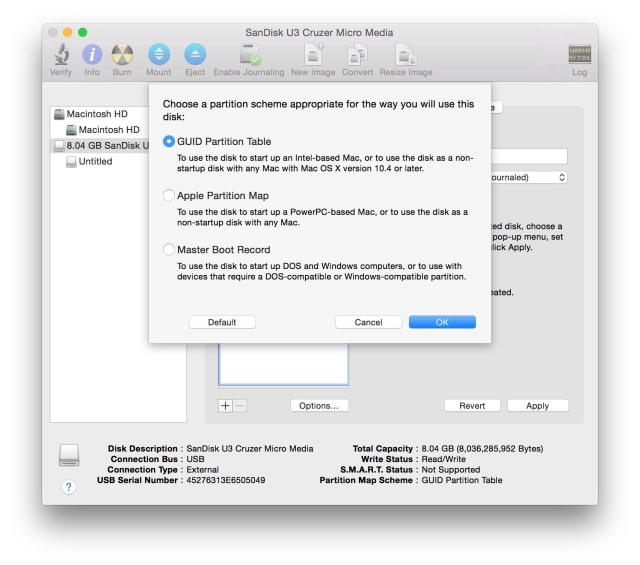
/diskutility-56a5d5205f9b58b7d0dea12f.jpg)
So don’t forget to backup your data first.įor more about OS X 10.11 and its new features, check out our handy El Capitan Compatibility and Transition Guide.


It should be noted that DiskMaker X erases the volume or the drive you chose, according to the options you chose. All you need is an 8 GB (minimum) USB thumb drive, a USB, FireWire, or Thunderbolt drive or an SD-Card the OS X 10.11 El Capitan Installer from the App Store (once the download is complete the installer file will appear in the Applications folder - do not move it) and the DiskMaker X installer. Like the previous versions, DiskMaker X is free of charge (however, donations are accepted). Luckily, DiskMaker X helps fill the void by allowing you to make a bootable OS X 10.11 El Capitan USB install drive, making a task such as installing on several different machines easier. So if you previously relied on DVD installs, you won’t be able to do so with this version. And as with previous OS X versions dating back to OS X 10.7, El Capitan is only available for install via download from the App Store. With OS X El Capitan, Apple has built on many of the changes that were brought on by Yosemite. UPDATE 09/2016: Create a Bootable macOS Sierra Install Drive with DiskMaker X UPDATE 09/2017: Create a Bootable macOS High Sierra Install Drive with DiskMaker X 7 You can now quit Terminal and eject the volume.UPDATE 09/2018: Create a Bootable macOS Mojave Install Drive with DiskMaker X 8 When Terminal says that it's done, the volume will have the same name as the installer you downloaded, such as Install macOS Monterey.After the volume is erased, you may see an alert that Terminal would like to access files on a removable volume.Terminal shows the progress as the volume is erased. When prompted, type Y to confirm that you want to erase the volume, then press Return.Terminal doesn't show any characters as you type. When prompted, type your administrator password.If the volume has a different name, replace MyVolume in the command with the name of your volume. Each command assumes that the installer is in your Applications folder, and MyVolume is the name of the USB flash drive or other volume you're using. Type or paste one of the commands below into Terminal, then press Return to enter the command.Open Terminal, which is in the Utilities folder of your Applications folder.Plug in the USB flash drive or other volume that you're using for the bootable installer.


 0 kommentar(er)
0 kommentar(er)
